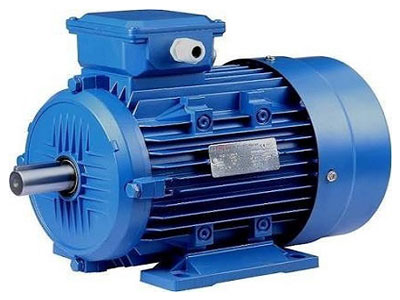Key Takeaway
An asynchronous servo motor, also known as an induction servo motor, operates on the principle of electromagnetic induction. Unlike synchronous motors, the rotor in an asynchronous motor doesn’t rotate at the same speed as the magnetic field, resulting in a “slip” that varies with the load. This slip allows the motor to generate the necessary torque, making it ideal for applications that require high power and flexibility.
Asynchronous servo motors are robust and self-starting, making them suitable for industrial automation tasks such as packaging, where handling varying loads is essential. However, they offer less precise speed control compared to synchronous motors, which can be a trade-off depending on the application’s needs.
Introduction to Asynchronous Servo Motors
Asynchronous servo motors are a specialized type of motor designed to combine the benefits of asynchronous (induction) motors with the precise control capabilities of servo systems. These motors are commonly used in applications where both speed and position control are critical. Unlike traditional servo motors, which often rely on synchronous technology, asynchronous servo motors utilize the principles of induction, making them highly efficient and versatile. The key appeal of these motors lies in their ability to deliver high torque even at low speeds, making them suitable for tasks that require both power and precision. For engineers stepping into the world of automation and robotics, understanding asynchronous servo motors is essential, as they play a crucial role in many advanced industrial applications.

Key Differences Between Asynchronous Servo Motors and Standard Servo Motors
When comparing asynchronous servo motors with standard servo motors, several key differences emerge. The most significant difference is the type of motor technology each uses. Standard servo motors are typically synchronous, meaning the rotor moves in exact synchrony with the stator’s magnetic field. In contrast, asynchronous servo motors, as the name suggests, operate slightly out of sync with the stator field. This asynchrony allows these motors to generate high torque across a broader range of speeds, making them more adaptable in various applications.
Another difference lies in their construction and control mechanisms. Asynchronous servo motors often have a more rugged build, which makes them ideal for harsh industrial environments. Additionally, the control systems for asynchronous servo motors are designed to handle the dynamic nature of these motors, allowing for precise adjustments even when the motor operates under varying loads. These characteristics make asynchronous servo motors a preferred choice in industries where both flexibility and durability are required.
How Asynchronous Servo Motors Work
The operation of an asynchronous servo motor is rooted in the principles of electromagnetic induction. When an alternating current (AC) flows through the stator windings, it creates a rotating magnetic field. This field induces a current in the rotor, which in turn generates its own magnetic field. However, unlike in synchronous motors, the rotor in an asynchronous motor does not rotate at the same speed as the stator field. This difference in speed, known as slip, is what allows the motor to generate torque.
In a servo system, this torque is precisely controlled using feedback mechanisms. Sensors continuously monitor the motor’s position, speed, and torque, providing real-time data to the controller. The controller then adjusts the motor’s input to maintain the desired performance, ensuring that the motor operates efficiently even under changing conditions. This ability to adjust dynamically makes asynchronous servo motors highly effective in complex automation systems where precision and adaptability are paramount.
Applications of Asynchronous Servo Motors
Asynchronous servo motors are used across a wide range of industries due to their versatility and robust performance. One of the most common applications is in industrial automation, where these motors drive machinery that requires both precision and power. For example, in CNC machines, asynchronous servo motors are responsible for the precise movement of cutting tools, ensuring accurate machining of parts. Similarly, in robotics, these motors are used to control the movement of robotic arms, enabling them to perform tasks with high precision and repeatability.
Another critical application is in the automotive industry, where asynchronous servo motors are employed in assembly lines to handle tasks such as welding, painting, and assembling components. The ability to operate efficiently under varying loads makes these motors ideal for such demanding environments. Additionally, asynchronous servo motors are increasingly being used in renewable energy systems, such as wind turbines, where their ability to deliver consistent performance in fluctuating conditions is highly valued.
Benefits and Drawbacks of Asynchronous Servo Motors
Asynchronous servo motors offer several benefits, making them a popular choice in many industrial applications. One of the primary advantages is their high efficiency, particularly at low speeds. This makes them ideal for applications where energy conservation is crucial. Additionally, these motors are known for their durability and ability to operate in harsh environments, reducing the need for frequent maintenance.
However, there are also some drawbacks to consider. Asynchronous servo motors are generally more complex to control than their synchronous counterparts, requiring more sophisticated control systems. This can lead to higher upfront costs and increased complexity in system design. Moreover, while these motors are highly efficient at low speeds, they may not perform as well at very high speeds, limiting their use in certain high-speed applications. Despite these challenges, the benefits of asynchronous servo motors often outweigh the drawbacks, particularly in applications where both precision and flexibility are required.
Conclusion
Asynchronous servo motors occupy a unique niche in the world of industrial motors, offering a blend of power, precision, and adaptability that few other motors can match. For engineers, particularly those new to the field, understanding the workings and applications of these motors is crucial for designing efficient and reliable systems. Whether in automation, robotics, or renewable energy, asynchronous servo motors continue to play a vital role, driving innovation and enhancing performance across a wide range of industries. As technology continues to evolve, these motors are likely to become even more integral to the next generation of industrial solutions.
